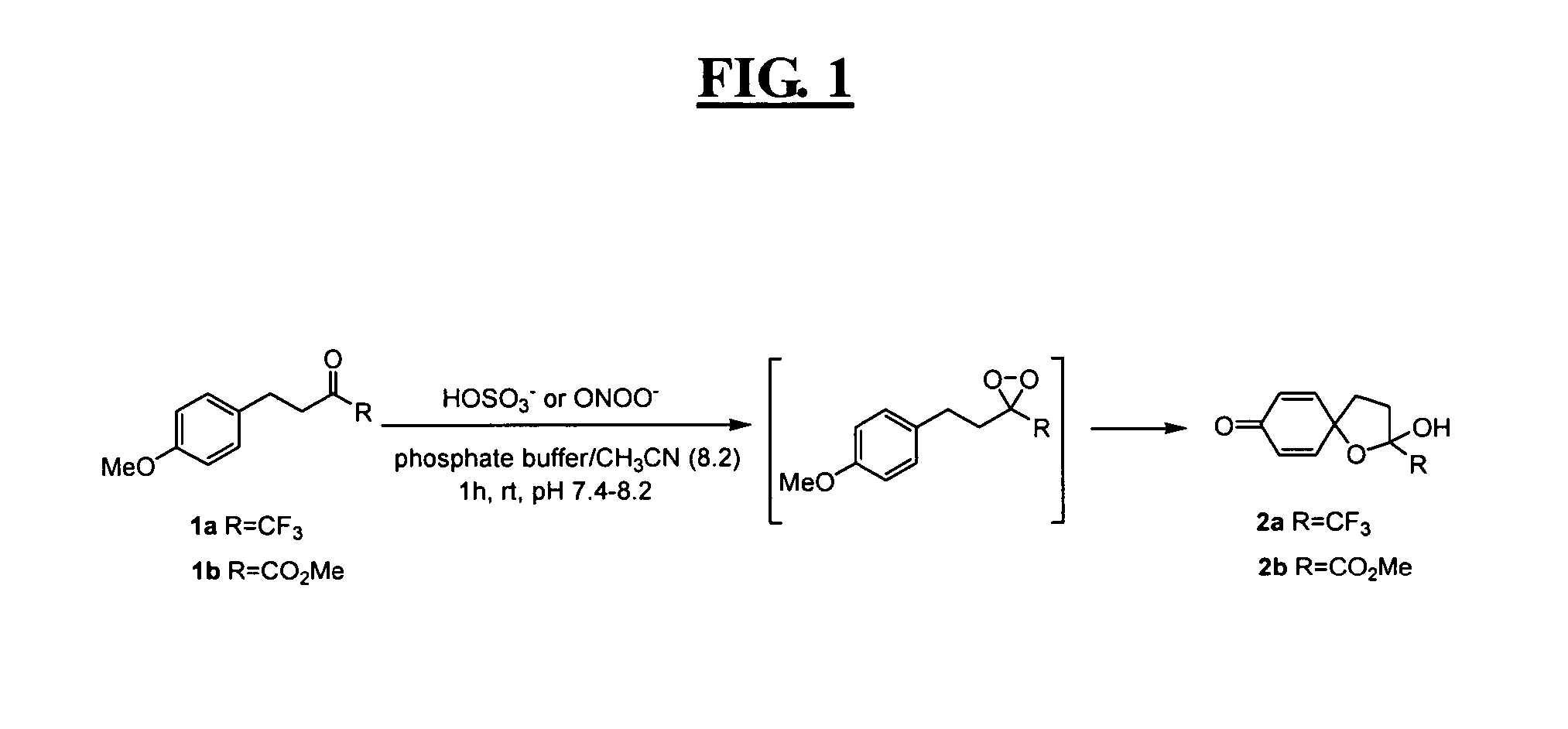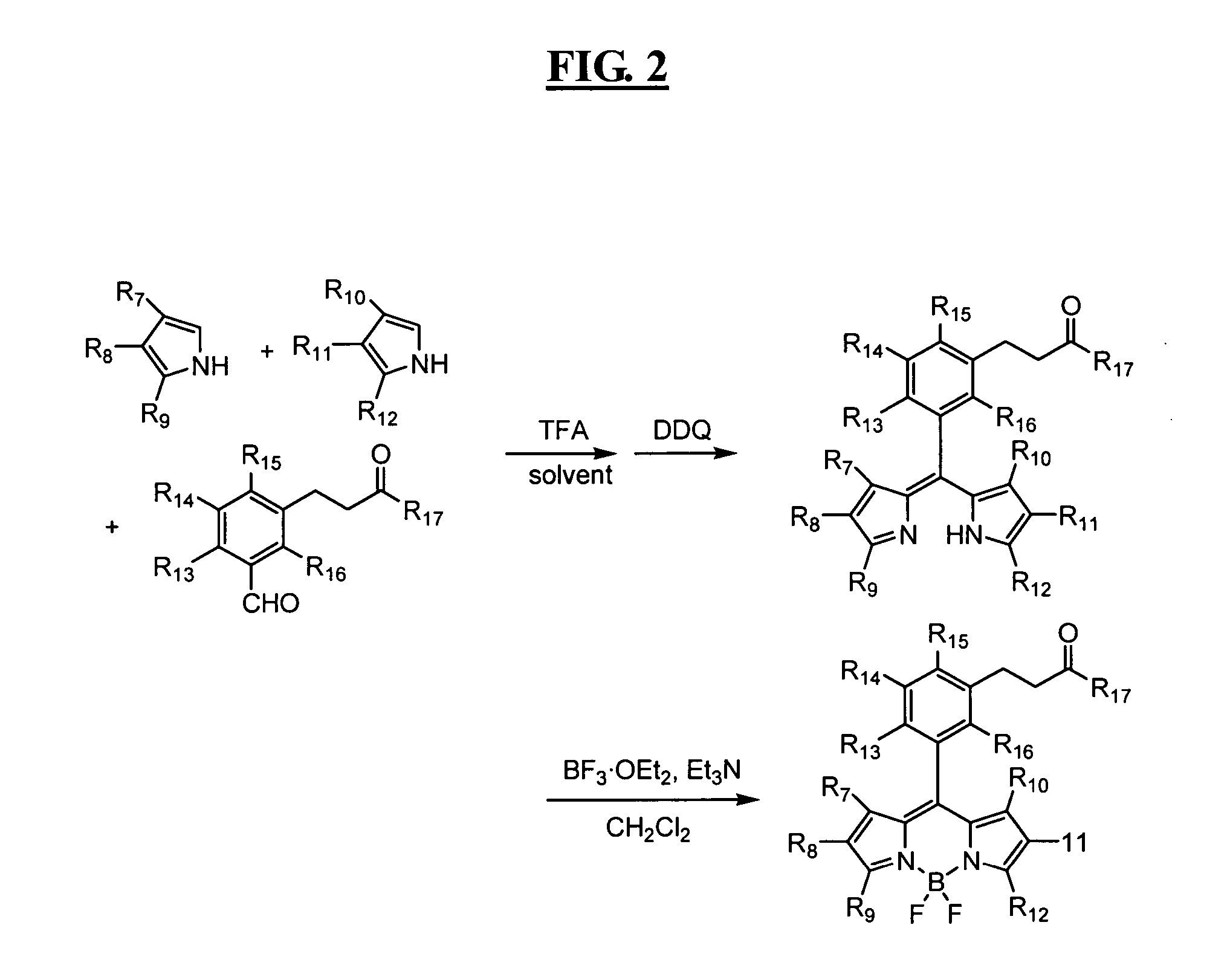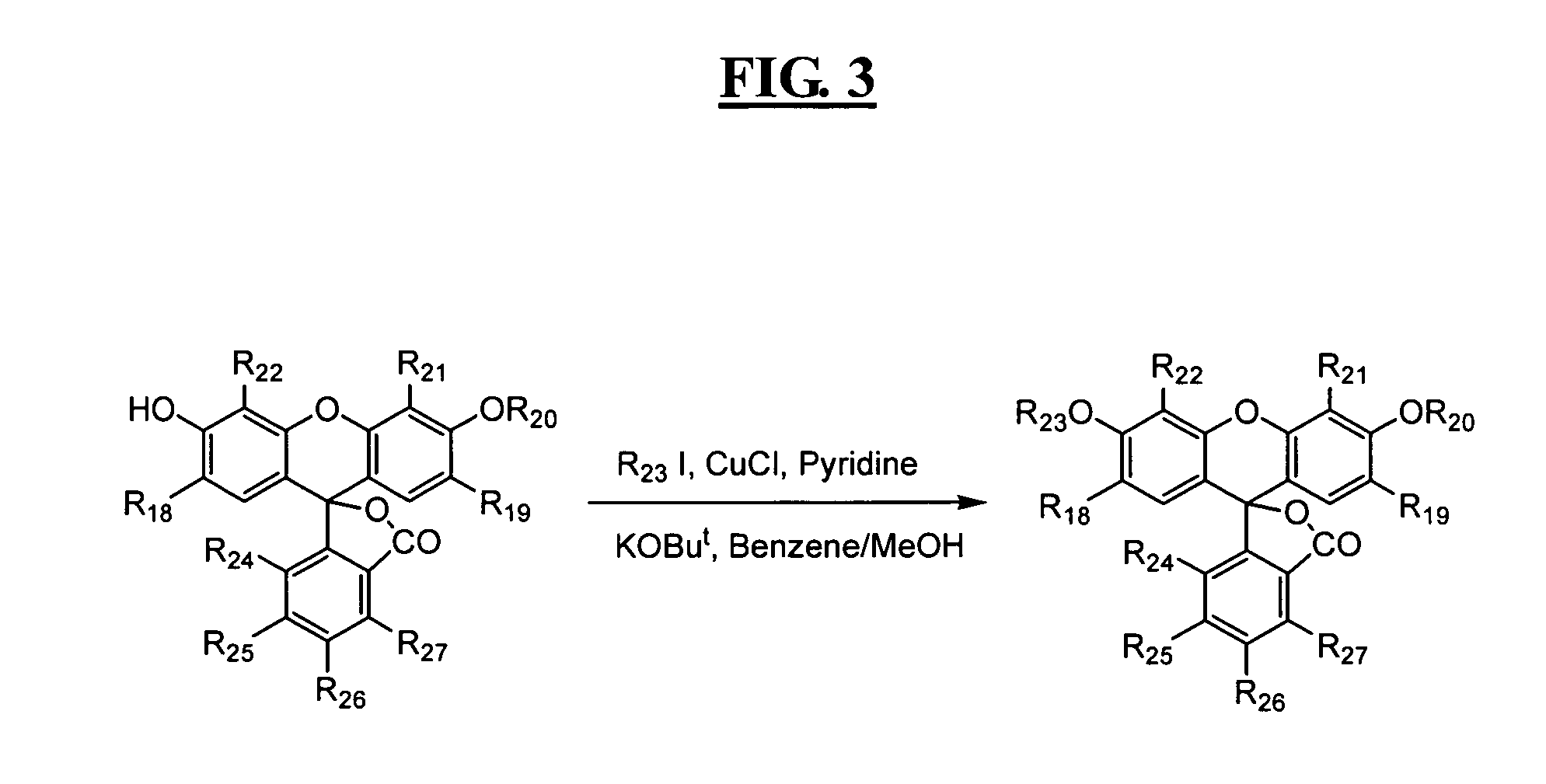Reagents for highly specific detection of peroxynitrite
a technology of peroxynitrite and reagents, which is applied in the field of highly specific detection of peroxynitrite, can solve the problems of inability to use unambiguous detection and quantification tools, inability to achieve spatial imaging of peroxynitrite, and inability to detect and quantify peroxynitrite in cells and tissues
- Summary
- Abstract
- Description
- Claims
- Application Information
AI Technical Summary
Benefits of technology
Problems solved by technology
Method used
Image
Examples
example 1
Synthetic Scheme of ss-6
1) Synthesis of pyrrole-2-carboxylic acid (Shown in FIG. 4)
[0105]Pyrrole-2-carboxaldehyde (10.0 g, 105 mmol) was dissolved in 50 mL of methanol then diluted by 500 mL of distilled water. Fresh silver oxide (48.3 g, 210 mmol) and sodium hydroxide (8.5 g, 212 mmol) were added. The reaction mixture was then stirred for one hour at root temperature. The precipitate was filtered off and washed with hot water. The combined filtrates and washings were extracted with diethyl ether (500 mL) and then acidified at 0° C. with 37% hydrochloric acid. The solution was extracted with diethyl ether (200 mL×4). The combined organic extract was dried over magnesium sulfate. The solvent was evaporated under reduced pressure to obtain pyrrole-2-carboxylic acid [634-97-9] (9.9 g, 85% yield).
2) Synthesis of N,N-diethyl-1H-pyrrole-2-carboxamide (ss-1) (shown in FIG. 4)
[0106]Pyrrole-2-carboxylic acid (10.0 g, 90 mmol) was dissolved. in 250 mL of dichloromethane. DCC (N,N-dicyclohexyl...
example 2
1) Fluorescence Spectrum of ss-6
[0115]Compound ss-6 obtained in Example 1 was dissolved in CH3CN to a concentration of 2 mM, and then the solution was added a 100 mM sodium phosphate buffer (pH 7.4) for dissolution to a final concentration of 20 μM. The excitation spectrum and the fluorescence spectrum of the 20 μM ss-6 solution were measured using a Perkin Elmer LS50 fluorescence spectrometer. Slit width was 5 nm for both the excitation spectrum and the fluorescence spectrum, and the photomultiplier voltage was 775 V. The measurement was carried out at the excitation wavelength of 515 nm. The results are shown in FIG. 8.
[0116]In order to investigate the reaction between ss-6 and peroxynitrite (ONOO−), a solution of ONOO− was prepared by the method of Keith and Powell (Keith, W. G. & Powell, R. E.; Kinetics of decomposition of peroxynitrous acid; J. Chem. Soc. A, 1969, 1, 90). Briefly, a mixture of sodium nitrite (0.6 mol / L), and hydrogen peroxide (0.7 mol / L) was acidified with hydr...
example 3
Comparison of Specificity of ss-6 with Different Reactive Oxygen Species
[0120]Compound ss-6 obtained in Example 1 was dissolved in CH3CN to a concentration of 2 mM, and then the solution was added with a 100 mM sodium phosphate buffer (pH 7.4) for dissolution at a final concentration of 20 μM. 50 μL of different reactive oxygen species (10 equiv) were added independently to 5 mL of the corresponding ss-6 solution. The changes in fluorescence intensity before and after the treatment were measured. The fluorescence intensity was measured under the same conditions as those in Example 2. Each concentration of the fluorescence probe was 20 μM (a 100 mM sodium phosphate buffer, pH 7.4). The results are shown in Table 1. It was verified from the result that ss-6 has very high selectivity.
[0121]
TABLE 1ROSProbeONOO−SIN-1a•OHb1O2cO2•-dH2O2ess-6750%166%2%3%−1%−5%aSIN-1 can generate ONOO− slowly in buffer.bFe(ClO4)2 (25 μL, 40 mM in buffer) and H2O2 (25 μL, 80 mM) were added.c[3-(1,4-dihydro-1,...
PUM
| Property | Measurement | Unit |
|---|---|---|
| temperature | aaaaa | aaaaa |
| temperature | aaaaa | aaaaa |
| pH | aaaaa | aaaaa |
Abstract
Description
Claims
Application Information
 Login to View More
Login to View More - R&D
- Intellectual Property
- Life Sciences
- Materials
- Tech Scout
- Unparalleled Data Quality
- Higher Quality Content
- 60% Fewer Hallucinations
Browse by: Latest US Patents, China's latest patents, Technical Efficacy Thesaurus, Application Domain, Technology Topic, Popular Technical Reports.
© 2025 PatSnap. All rights reserved.Legal|Privacy policy|Modern Slavery Act Transparency Statement|Sitemap|About US| Contact US: help@patsnap.com



